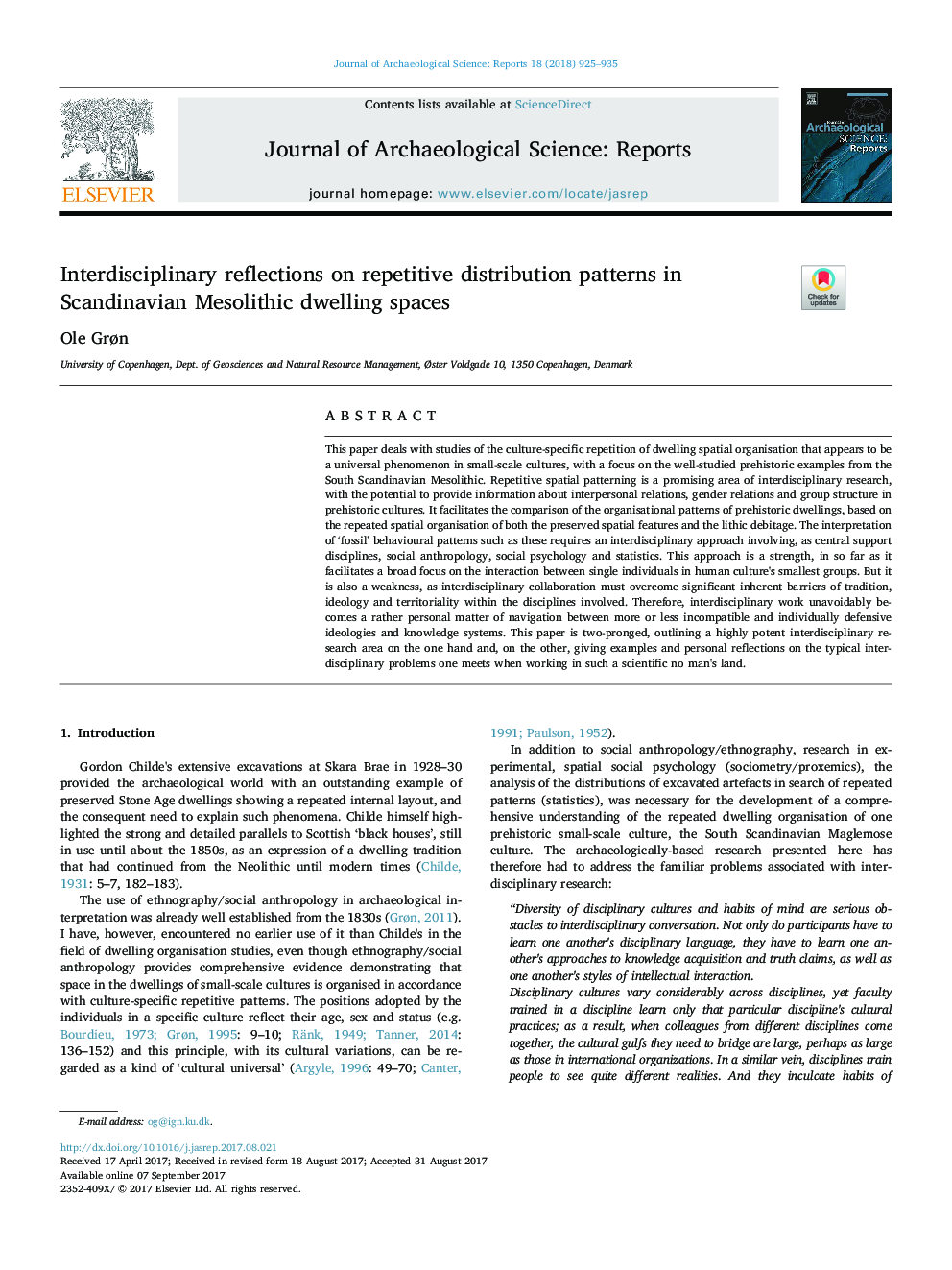| Article ID | Journal | Published Year | Pages | File Type |
|---|---|---|---|---|
| 7444547 | Journal of Archaeological Science: Reports | 2018 | 11 Pages |
Abstract
This paper deals with studies of the culture-specific repetition of dwelling spatial organisation that appears to be a universal phenomenon in small-scale cultures, with a focus on the well-studied prehistoric examples from the South Scandinavian Mesolithic. Repetitive spatial patterning is a promising area of interdisciplinary research, with the potential to provide information about interpersonal relations, gender relations and group structure in prehistoric cultures. It facilitates the comparison of the organisational patterns of prehistoric dwellings, based on the repeated spatial organisation of both the preserved spatial features and the lithic debitage. The interpretation of 'fossil' behavioural patterns such as these requires an interdisciplinary approach involving, as central support disciplines, social anthropology, social psychology and statistics. This approach is a strength, in so far as it facilitates a broad focus on the interaction between single individuals in human culture's smallest groups. But it is also a weakness, as interdisciplinary collaboration must overcome significant inherent barriers of tradition, ideology and territoriality within the disciplines involved. Therefore, interdisciplinary work unavoidably becomes a rather personal matter of navigation between more or less incompatible and individually defensive ideologies and knowledge systems. This paper is two-pronged, outlining a highly potent interdisciplinary research area on the one hand and, on the other, giving examples and personal reflections on the typical interdisciplinary problems one meets when working in such a scientific no man's land.
Related Topics
Social Sciences and Humanities
Arts and Humanities
History
Authors
Ole Grøn,
